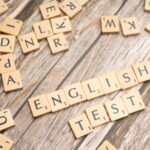Frequently Asked Questions (FAQ)
How is the CELPIP Reading test structured?
The CELPIP Reading test is a computer-based exam lasting 55-60 minutes. It includes a practice task followed by four scored parts: Reading Correspondence, Reading to Apply a Diagram, Reading for Information, and Reading for Viewpoints, each designed to test real-world English comprehension skills.
What is the best way to manage time during the test?
The best time management strategy is to allocate a rough time limit for each of the four sections and stick to it. Use the on-screen timer to pace yourself, and if a question proves too difficult, make an educated guess and move on to ensure you have time to attempt every question.
What does it mean to skim and scan a text?
Skimming is reading quickly to get a general understanding of a text’s main idea and structure. Scanning is moving your eyes quickly over a text to find a specific piece of information, like a name, date, or keyword, without reading every word.
How can I improve my reading score outside of taking practice tests?
You can significantly improve your reading skills by making a habit of reading diverse English materials daily, such as Canadian news articles, professional journals, and books. This expands your vocabulary, improves your reading speed, and familiarizes you with different writing styles relevant to the test.
Talk to us to find out more. ->
The content above is not intended to provide legal advice or opinions of any kind and may not be used for professional or commercial purposes.
Master Time Management: Allocate your 55-60 minutes wisely across the four parts. Use the on-screen timer as a guide, and do not get stuck on any single question. It is better to make an educated guess and move on. Use a Three-Tiered Reading Approach: Begin by skimming each passage to grasp the main idea. Then, read the questions and scan the text for keywords to locate relevant information. Finally, read for detail (deep-dive) the specific section to confirm your answer. Develop a Section-Specific Strategy: Tailor your approach for each part. Focus on purpose and tone for correspondence (Part 1), synthesize visual and text data for diagrams (Part 2), use a scan-and-locate method for long articles (Part 3), and analyze and compare arguments for viewpoints (Part 4). Build Foundational Skills: Go beyond practice tests. Engage in daily reading of diverse English materials like Canadian news, articles, and books to naturally improve vocabulary, speed, and comprehension. Practice Under Test Conditions: Use official CELPIP practice materials to simulate the computer-based test environment. This helps build familiarity with the interface and develops the stamina needed to maintain focus for the duration of the test.Frequently Asked Questions (FAQ)
How is the CELPIP Reading test structured?
The CELPIP Reading test is a computer-based exam lasting 55-60 minutes. It includes a practice task followed by four scored parts: Reading Correspondence, Reading to Apply a Diagram, Reading for Information, and Reading for Viewpoints, each designed to test real-world English comprehension skills.
What is the best way to manage time during the test?
The best time management strategy is to allocate a rough time limit for each of the four sections and stick to it. Use the on-screen timer to pace yourself, and if a question proves too difficult, make an educated guess and move on to ensure you have time to attempt every question.
What does it mean to skim and scan a text?
Skimming is reading quickly to get a general understanding of a text’s main idea and structure. Scanning is moving your eyes quickly over a text to find a specific piece of information, like a name, date, or keyword, without reading every word.
How can I improve my reading score outside of taking practice tests?
You can significantly improve your reading skills by making a habit of reading diverse English materials daily, such as Canadian news articles, professional journals, and books. This expands your vocabulary, improves your reading speed, and familiarizes you with different writing styles relevant to the test.
Talk to us to find out more. ->
The content above is not intended to provide legal advice or opinions of any kind and may not be used for professional or commercial purposes.
- Master Time Management: Allocate your 55-60 minutes wisely across the four parts. Use the on-screen timer as a guide, and do not get stuck on any single question. It is better to make an educated guess and move on.
Use a Three-Tiered Reading Approach: Begin by skimming each passage to grasp the main idea. Then, read the questions and scan the text for keywords to locate relevant information. Finally, read for detail (deep-dive) the specific section to confirm your answer.
Develop a Section-Specific Strategy: Tailor your approach for each part. Focus on purpose and tone for correspondence (Part 1), synthesize visual and text data for diagrams (Part 2), use a scan-and-locate method for long articles (Part 3), and analyze and compare arguments for viewpoints (Part 4).
Build Foundational Skills: Go beyond practice tests. Engage in daily reading of diverse English materials like Canadian news, articles, and books to naturally improve vocabulary, speed, and comprehension.
Practice Under Test Conditions: Use official CELPIP practice materials to simulate the computer-based test environment. This helps build familiarity with the interface and develops the stamina needed to maintain focus for the duration of the test.
Frequently Asked Questions (FAQ)
How is the CELPIP Reading test structured?
The CELPIP Reading test is a computer-based exam lasting 55-60 minutes. It includes a practice task followed by four scored parts: Reading Correspondence, Reading to Apply a Diagram, Reading for Information, and Reading for Viewpoints, each designed to test real-world English comprehension skills.
What is the best way to manage time during the test?
The best time management strategy is to allocate a rough time limit for each of the four sections and stick to it. Use the on-screen timer to pace yourself, and if a question proves too difficult, make an educated guess and move on to ensure you have time to attempt every question.
What does it mean to skim and scan a text?
Skimming is reading quickly to get a general understanding of a text’s main idea and structure. Scanning is moving your eyes quickly over a text to find a specific piece of information, like a name, date, or keyword, without reading every word.
How can I improve my reading score outside of taking practice tests?
You can significantly improve your reading skills by making a habit of reading diverse English materials daily, such as Canadian news articles, professional journals, and books. This expands your vocabulary, improves your reading speed, and familiarizes you with different writing styles relevant to the test.
Talk to us to find out more. ->
The content above is not intended to provide legal advice or opinions of any kind and may not be used for professional or commercial purposes.
- Master Time Management: Allocate your 55-60 minutes wisely across the four parts. Use the on-screen timer as a guide, and do not get stuck on any single question. It is better to make an educated guess and move on.
Use a Three-Tiered Reading Approach: Begin by skimming each passage to grasp the main idea. Then, read the questions and scan the text for keywords to locate relevant information. Finally, read for detail (deep-dive) the specific section to confirm your answer.
Develop a Section-Specific Strategy: Tailor your approach for each part. Focus on purpose and tone for correspondence (Part 1), synthesize visual and text data for diagrams (Part 2), use a scan-and-locate method for long articles (Part 3), and analyze and compare arguments for viewpoints (Part 4).
Build Foundational Skills: Go beyond practice tests. Engage in daily reading of diverse English materials like Canadian news, articles, and books to naturally improve vocabulary, speed, and comprehension.
Practice Under Test Conditions: Use official CELPIP practice materials to simulate the computer-based test environment. This helps build familiarity with the interface and develops the stamina needed to maintain focus for the duration of the test.
Frequently Asked Questions (FAQ)
How is the CELPIP Reading test structured?
The CELPIP Reading test is a computer-based exam lasting 55-60 minutes. It includes a practice task followed by four scored parts: Reading Correspondence, Reading to Apply a Diagram, Reading for Information, and Reading for Viewpoints, each designed to test real-world English comprehension skills.
What is the best way to manage time during the test?
The best time management strategy is to allocate a rough time limit for each of the four sections and stick to it. Use the on-screen timer to pace yourself, and if a question proves too difficult, make an educated guess and move on to ensure you have time to attempt every question.
What does it mean to skim and scan a text?
Skimming is reading quickly to get a general understanding of a text’s main idea and structure. Scanning is moving your eyes quickly over a text to find a specific piece of information, like a name, date, or keyword, without reading every word.
How can I improve my reading score outside of taking practice tests?
You can significantly improve your reading skills by making a habit of reading diverse English materials daily, such as Canadian news articles, professional journals, and books. This expands your vocabulary, improves your reading speed, and familiarizes you with different writing styles relevant to the test.
Talk to us to find out more. ->
The content above is not intended to provide legal advice or opinions of any kind and may not be used for professional or commercial purposes.
A high score on the Canadian English Language Proficiency Index Program (CELPIP) test is a critical component for many Canadian immigration pathways, most notably Express Entry. The reading component, in particular, assesses a candidate’s ability to understand and interpret written English in various real-world contexts. Success here is not merely about vocabulary; it’s about strategy, time management, and a deep understanding of the test’s structure. This guide provides an in-depth, strategic framework to help aspiring immigrants navigate the complexities of the CELPIP Reading test with confidence and precision.
Table of Contents
- Demystifying the CELPIP Reading Test: A Foundational Overview
The Ultimate Time Management Blueprint for the CELPIP Reading Component
Powerful Reading Techniques: Skimming, Scanning, and Deep-Diving for Maximum Points
A Strategic Breakdown: Conquering Each Section of the CELPIP Reading Test
Beyond the Test: Essential Habits for Elevating Your Everyday Reading Comprehension
Key Takeaways: Your Final Checklist for CELPIP Reading Success
Frequently Asked Questions (FAQ)
Demystifying the CELPIP Reading Test: A Foundational Overview for Aspiring Immigrants
Before diving into advanced strategies, it is paramount to have a clear and comprehensive understanding of the CELPIP Reading test’s structure. This section of the exam is designed to simulate authentic communication scenarios one would encounter in Canada. It consists of four distinct parts, administered on a computer, with a total time allocation of 55-60 minutes. It’s crucial to recognize that the CELPIP is not just a test of English, but a test of efficiency and comprehension under pressure. The score obtained translates directly into the Canadian Language Benchmark (CLB) levels, which are then used to calculate points for immigration streams like Express Entry. A single level increase in your CLB can have a significant impact on your Comprehensive Ranking System (CRS) score, potentially making the difference between receiving an Invitation to Apply (ITA) and remaining in the pool. The test includes a practice task followed by four scored parts: Part 1 involves reading correspondence, Part 2 requires interpreting a diagram, Part 3 tests reading for information, and Part 4 challenges the test-taker to analyze differing viewpoints. Each part has a unique format and question style, demanding a flexible and adaptive approach from the candidate.
The Ultimate Time Management Blueprint for the CELPIP Reading Component
Time is arguably the most challenging adversary in the CELPIP Reading test. With approximately one minute per question, including reading time, efficient time allocation is non-negotiable. A robust time management strategy begins with understanding the on-screen timer. This timer is your guide and should be referenced frequently, but without causing panic. A sound approach is to set internal time limits for each of the four parts. For example, some professionals suggest allocating around 10-12 minutes for each section. However, a more nuanced strategy involves adjusting time based on the complexity and length of the passages. Parts 3 and 4, which often contain denser text and more complex questions, may require more time than Parts 1 and 2. It’s essential to practice this allocation beforehand. Never get bogged down on a single difficult question. If a question is consuming more than a minute of your time, it’s strategically wiser to make an educated guess, flag the question for review if the system allows, and move on. You can always return to it at the end of the section if time permits. Remember, an unanswered question guarantees zero points, while an educated guess offers a chance to score. The goal is to answer every question, ensuring you don’t leave easy points on the table due to poor pacing on harder ones.
Powerful Reading Techniques: Skimming, Scanning, and Deep-Diving for Maximum Points
To navigate the CELPIP Reading test effectively, one must master three core reading techniques: skimming, scanning, and deep-diving (or reading for detail). These are not interchangeable; each serves a specific purpose. Skimming is the art of reading quickly to get a general overview or gist of a text. This should be your first step for every passage. By skimming, you can identify the main idea, the tone (e.g., formal, informal, persuasive), and the overall structure. This provides crucial context before you even look at the questions. Scanning is used when you are looking for a specific piece of information, such as a name, date, number, or keyword. After reading a question, you should scan the text for the relevant word or phrase. Your eyes move quickly over the text, ignoring other information until you find what you’re looking for. This is particularly useful for questions that ask for specific details. Finally, deep-diving or reading for detail is required for questions that test your in-depth understanding. These are often ‘inference’ questions, where the answer is not stated directly but is implied. Once you have located the relevant section of the text by scanning, you must read it carefully, sentence by sentence, to fully understand the meaning, implications, and any subtle nuances. The key to a high score is knowing which technique to apply and when. A typical workflow would be: skim the entire passage first, then read the questions, and for each question, scan the passage for the relevant section before deep-diving to confirm the correct answer.
A Strategic Breakdown: Conquering Each Section of the CELPIP Reading Test
A tailored approach for each of the four parts of the reading test can significantly boost performance. Understanding the specific challenges and question types in each section allows for a more focused and effective response.
Navigating Part 1: Reading Correspondence with Unwavering Confidence
This section presents a piece of correspondence, typically an email, and asks questions about its purpose, details, and tone. The key here is to first skim the email to understand the context: who is writing to whom, and what is the general subject? Pay close attention to the opening and closing lines, as they often reveal the main purpose and the relationship between the correspondents. The questions will test your ability to locate specific information and infer the writer’s intent. For example, a question might ask why a particular phrase was used. To answer this, you must read the sentence in question and the surrounding sentences carefully to understand its function within the broader message. The language is usually semi-formal or informal, so an understanding of common English expressions and idioms is beneficial.
Mastering Part 2: How to Flawlessly Interpret Diagrams and Text
Part 2 combines a visual element—such as a chart, table, or floor plan—with a short text or email. The challenge is to synthesize information from both sources. A common mistake is to focus too heavily on one and not the other. The most effective strategy is to first quickly analyze the diagram. What information is it presenting? What are the labels, axes, or keys? Once you have a basic grasp of the visual, read the accompanying text, which will often provide context or additional details. The questions will require you to cross-reference information. For instance, the text might mention a specific item or event, and you’ll need to locate its corresponding data point or location on the diagram to answer the question. It is a test of practical information retrieval. Work methodically, moving between the text and the diagram as needed for each question.
Excelling in Part 3: The Art of Pinpointing Information Swiftly
This section presents a longer article from which information needs to be extracted to answer several questions. Here, the challenge is volume and focus. It is highly inefficient to read the entire article in detail from start to finish. Instead, use the scan-and-locate technique. Read the first question, identify the keywords, and then scan the article for those keywords or their synonyms. The article is typically organized into paragraphs, and the questions often follow the order of the information in the text. Once you locate the relevant paragraph, read it carefully to find the answer. Part 3 also includes a question that asks you to choose which paragraph contains specific information. For this, a quick skim of each paragraph’s topic sentence at the beginning can help you build a mental map of the article’s structure, making it faster to pinpoint the correct paragraph later.
Dominating Part 4: Analyzing and Contrasting Complex Viewpoints
Part 4 is often considered the most demanding section. It presents a text, such as a forum post or an opinion article, that expresses a strong viewpoint on a topic. Following this, a second text presents a response or a contrasting viewpoint. The questions require you to identify the main arguments, tone, and specific points of agreement or disagreement between the two writers. The key to success is to analyze each text separately before comparing them. First, read the initial text and summarize its main argument and tone in your mind. Then, do the same for the second text. As you read the second text, actively look for points that directly support, contradict, or elaborate on the arguments from the first text. Questions will probe your understanding of both individual perspectives and the relationship between them. This requires careful reading and the ability to distinguish fact from opinion and identify persuasive language.
Beyond the Test: Essential Habits for Elevating Your Everyday Reading Comprehension
While test-specific strategies are vital, long-term improvement in reading comprehension will provide the most solid foundation for success. High-scoring candidates often have strong daily reading habits. Make it a routine to read a variety of English materials. This includes Canadian news websites (like CBC, Global News, or the National Post), magazines (such as Maclean’s), professional articles related to your field, and even novels. This exposure accomplishes several things: it expands your vocabulary naturally, it familiarizes you with different writing styles and structures, and it improves your reading speed and stamina. When you read, do so actively. Ask yourself questions about the text: What is the author’s main point? What evidence is provided? What is the underlying tone? This practice of active engagement trains your brain to do exactly what the CELPIP test demands. Furthermore, whenever you encounter an unfamiliar word, don’t just skip it. Look it up, understand its meaning in context, and perhaps even note it down in a vocabulary journal. Consistent, active reading is the most powerful long-term tool for acing not only the CELPIP Reading test but also for integrating successfully into Canadian society.
Key Takeaways: Your Final Checklist for CELPIP Reading Success
Excelling in the CELPIP Reading test is a matter of combining a deep understanding of the test format with smart, repeatable strategies. It’s an exercise in both comprehension and efficiency. By internalizing the right techniques, candidates can approach the test with a sense of control and confidence, which is critical for performing well under pressure. The following points summarize the most crucial strategies discussed.
- Master Time Management: Allocate your 55-60 minutes wisely across the four parts. Use the on-screen timer as a guide, and do not get stuck on any single question. It is better to make an educated guess and move on.
Use a Three-Tiered Reading Approach: Begin by skimming each passage to grasp the main idea. Then, read the questions and scan the text for keywords to locate relevant information. Finally, read for detail (deep-dive) the specific section to confirm your answer.
Develop a Section-Specific Strategy: Tailor your approach for each part. Focus on purpose and tone for correspondence (Part 1), synthesize visual and text data for diagrams (Part 2), use a scan-and-locate method for long articles (Part 3), and analyze and compare arguments for viewpoints (Part 4).
Build Foundational Skills: Go beyond practice tests. Engage in daily reading of diverse English materials like Canadian news, articles, and books to naturally improve vocabulary, speed, and comprehension.
Practice Under Test Conditions: Use official CELPIP practice materials to simulate the computer-based test environment. This helps build familiarity with the interface and develops the stamina needed to maintain focus for the duration of the test.
Frequently Asked Questions (FAQ)
How is the CELPIP Reading test structured?
The CELPIP Reading test is a computer-based exam lasting 55-60 minutes. It includes a practice task followed by four scored parts: Reading Correspondence, Reading to Apply a Diagram, Reading for Information, and Reading for Viewpoints, each designed to test real-world English comprehension skills.
What is the best way to manage time during the test?
The best time management strategy is to allocate a rough time limit for each of the four sections and stick to it. Use the on-screen timer to pace yourself, and if a question proves too difficult, make an educated guess and move on to ensure you have time to attempt every question.
What does it mean to skim and scan a text?
Skimming is reading quickly to get a general understanding of a text’s main idea and structure. Scanning is moving your eyes quickly over a text to find a specific piece of information, like a name, date, or keyword, without reading every word.
How can I improve my reading score outside of taking practice tests?
You can significantly improve your reading skills by making a habit of reading diverse English materials daily, such as Canadian news articles, professional journals, and books. This expands your vocabulary, improves your reading speed, and familiarizes you with different writing styles relevant to the test.
Talk to us to find out more. ->
The content above is not intended to provide legal advice or opinions of any kind and may not be used for professional or commercial purposes.







